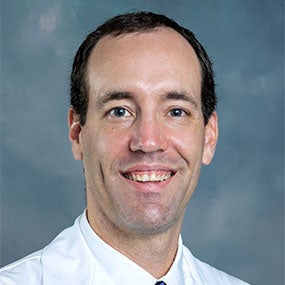Casey Buns, D.C., CCSP, CSCS, TPI Medical 3, faculty clinician, Palmer Chiropractic Clinics
Every year when the new line of drivers, irons, wedges, putters and balls come out, golfers flock to the shops to get the latest and greatest pieces of equipment. However, while this equipment may help them gain five to 10 years on the full-swing shots, they forget about the most important piece of equipment that can help them gain 30-50 yards – their body.
Today’s tour professionals not only have high skill and finesse with their swing and short game, but are also strong, fast and flexible athletes. This has compelled golf equipment manufacturers to develop technologies to keep up with the increasing capabilities of the best golfers in the world.
There are infinite ways to swing a golf club, but based on data gathered from motion-capture analysis of past and current rotational-sport athletes, there’s only one efficient sequence for everyone to swing.
This is called the “Kinematic Sequence.” It’s the progression of energy generation from the lower body first, thorax second, arms third, and the club last. It’s amazing that all great ball strikers may have different styles of golf swings, but they all generate speed throughout their bodies the same way. The average golfer has one or more of the sequenced regions out of position which results in having to unfavorably manipulate the club to contact the ball. These mechanical inefficiencies lead to common swing characteristics that produce inconsistent, inaccurate and weaker golf swings, with a possibility of producing painful injuries.
Using motion-capture analysis can help identify movement patterns, including deficiencies in either mobility (ability to move through a range of motion) or stability (ability to secure body segments against external forces). Any deficiency will lead to compensation and dysfunction resulting in inefficiencies and injuries. Movement pattern alterations also are great predictors of common swing faults, so much so that faults can be anticipated from a screening without even seeing a player’s swing. The remedy is to remove the physical limitations, if possible, leading to correcting the inefficient golf swing.
Golf professionals are wonderful at identifying mechanics and drills for correcting a golf swing but may not have enough knowledge about the body to identify or correct physical limitations. This is where golf, health care, and fitness professionals can work together as a team. The health-care practitioners will work with the golfer to build a good foundation of movement patterns. This allows the golf professional to have more success implementing efficient swing mechanics with fewer limitations to work around. The golfer’s capacity for power and durability can also be increased with training from a fitness professional who can help them gain speed and energy.
 If you’re interested in improving your golf game by improving your body, find the right professional for you in the area of your game you want to improve. A good place to start would be to find a Titleist Performance Institute (TPI) Certified professional. TPI leads the world in research and data on golf fitness, health and swing biomechanics. The certification shows the professional has reached a level of golf fitness expertise that is second to none. It’s the reason why 18 of the last 20 major champions and 25 of the top 30 golfers in the world are advised by a TPI Certified expert.
If you’re interested in improving your golf game by improving your body, find the right professional for you in the area of your game you want to improve. A good place to start would be to find a Titleist Performance Institute (TPI) Certified professional. TPI leads the world in research and data on golf fitness, health and swing biomechanics. The certification shows the professional has reached a level of golf fitness expertise that is second to none. It’s the reason why 18 of the last 20 major champions and 25 of the top 30 golfers in the world are advised by a TPI Certified expert.
Dr. Casey Buns is a faculty clinician at Palmer Chiropractic Clinics in Davenport, Iowa and holds an advanced Medical Certification from the Titleist Performance Institute since 2012. The Palmer Chiropractic Clinics network delivers more than 130,000 patient visits every year. Learn more or make an appointment at www.palmer.edu/clinics.
 If you’re interested in improving your golf game by improving your body, find the right professional for you in the area of your game you want to improve. A good place to start would be to find a Titleist Performance Institute (TPI) Certified professional. TPI leads the world in research and data on golf fitness, health and swing biomechanics. The certification shows the professional has reached a level of golf fitness expertise that is second to none. It’s the reason why 18 of the last 20 major champions and 25 of the top 30 golfers in the world are advised by a TPI Certified expert.
If you’re interested in improving your golf game by improving your body, find the right professional for you in the area of your game you want to improve. A good place to start would be to find a Titleist Performance Institute (TPI) Certified professional. TPI leads the world in research and data on golf fitness, health and swing biomechanics. The certification shows the professional has reached a level of golf fitness expertise that is second to none. It’s the reason why 18 of the last 20 major champions and 25 of the top 30 golfers in the world are advised by a TPI Certified expert.